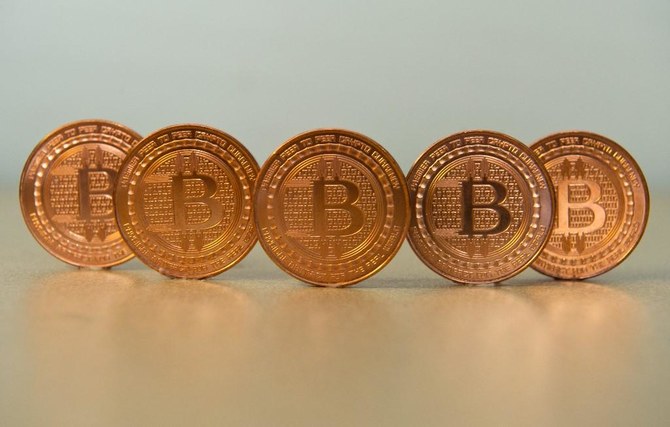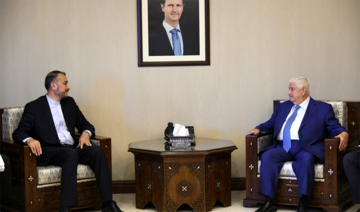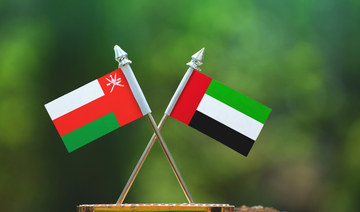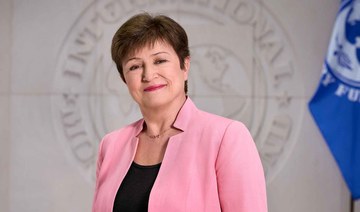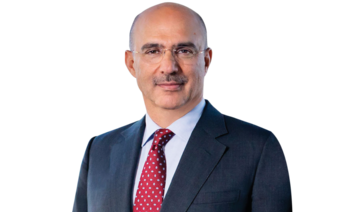TEHRAN: Iranians feeling the squeeze from US sanctions targeting the Islamic Republic’s ailing economy are increasingly turning to such digital currencies as Bitcoin to make money, prompting alarm in and out of the country.
In Iran, some government officials worry that the energy-hungry process of “mining” Bitcoin is abusing Iran’s system of subsidized electricity; in the United States, some observers have warned that cryptocurrencies could be used to bypass the Trump administration’s sanctions targeting Iran over its unraveling nuclear deal with world powers.
The Bitcoin craze has made the front pages of Iranian newspapers and been discussed by some of the country’s top ayatollahs, and there have been televised police raids on hidden computer farms set up to bring in money by “mining” the currency.
Like other digital currencies, Bitcoin is an alternative to money printed by sovereign governments around the world. Unlike those bills, however, cryptocurrencies are not controlled by a central bank. Bitcoin and other digital currencies like it trade globally in highly speculative markets without any backing from a physical entity.
As a result, computers around the world “mine” the data, meaning they use highly complex algorithms to verify transactions. The verified transactions, called blocks, are then added to a public record, known as the blockchain. Any time “miners” add a new block to the blockchain, they are rewarded with a payment in bitcoins.
To work, the expensive specialized computers require a lot of electricity to power their processors and to keep them cool. In Iran, “miners” have an edge because electricity is cheap thanks to longtime government subsidies. “Miners” also buy cheaper Chinese ready-made computers to do the work.
But the constant raids and authorities’ conflicting statements on the issue have Bitcoin “miners” in Iran incredibly leery of being identified. Those contacted by The Associated Press refused to speak about their work or to say how much they earn from their “mining.”
But they acknowledge they do this to make some money at a time when Iran’s currency, the rial, tumbled from 32,000 rials to $1 at the time of the 2015 nuclear deal, to around 120,000 rials to $1 now.
“It is clear that here has turned into a heaven for ‘miners,’” Mohammad Javad Azari Jahromi, Iran’s minister for information and communications technology, recently told AP in an interview. “The business of ‘mining’ is not forbidden in law but the government and the Central Bank have ordered the Customs Bureau to ban the import of (mining machines) until new regulations are introduced.”
Ali Bakhshi, the head of the Iran Electrical Industry Syndicate, said earlier this month that the country’s Energy Ministry likely would boost costs for Bitcoin “miners” to 7 cents for each kilowatt of electricity they consume, a massive increase from the current half-cent but still almost half the cost of electricity in the United States, according to the semi-official Fars news agency.
Still, there are concerns, especially among Iran’s religious leaders, that people might try to circumvent paying extra for the electricity as well as using digital currency to hide or move money illicitly.
Tabnak, a hard-line news website associated with a former commander of the country’s paramilitary Revolutionary Guard, quoted three ayatollahs describing Bitcoin as either problematic or “haram,” meaning forbidden. Islam prescribes strict rules about finance.
But Jahromi said clerics became more receptive to the idea after his staff briefed them that Bitcoin had a value in the real world, which is required under Islamic finance. Islamic finance also prohibits gambling, the payment of interest and misleading others.
“Some of our top clerics have issued fatwas that say Bitcoin is money without a reserve, that it is rejected by Islamic and cybercurrencies are haram,” Jahromi said. “When we explain to them this is not a currency but an asset, they change their mind.”
Iran has tried to keep its economic situation in check by controlling foreign currency rates and cutting down on those moving their money from the rial to other currencies, including Bitcoin. Last year, the semi-official Mehr news agency quoted Mohammad Reza Pour-Ebrahimi, the head of the Iranian parliament’s economic commission, as suggesting that about $2.5 billion left Iran through digital currency purchases. He did not elaborate and authorities have not discussed it since.
The US, meanwhile, has been keeping a close watch on Iranians holding bitcoins. In November, a federal grand jury in Newark, New Jersey, accused two Iranian men of hacking and holding hostage computer systems of over 200 American entities to extort them for Bitcoin, including the cities of Newark and Atlanta.
“As Iran becomes increasingly isolated and desperate for access to US dollars, it is vital that virtual currency exchanges, peer-to-peer exchangers and other providers of digital currency services harden their networks against these illicit schemes,” said Sigal Mandelker, Treasury’s undersecretary for terrorism and financial intelligence.
Not so, said Jahromi.
“Cybercurrencies are effective in bypassing sanctions when it comes to small transactions, but we do not see any special impact in them as far as mega-transactions are concerned,” he said. “We cannot use them to go around international monetary mechanisms.”
Bitcoin craze hits Iran as US sanctions squeeze weak economy
Bitcoin craze hits Iran as US sanctions squeeze weak economy
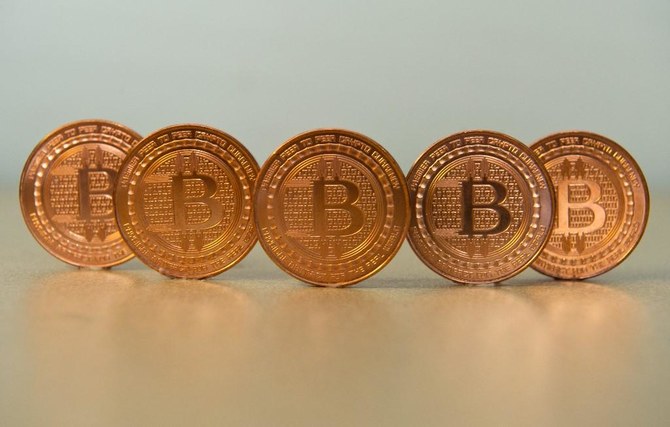
- Some Iranian officials worry that “mining” is abusing the subsidized electricity
- Iranian Bitcoin miners are purchasing more affordable Chinese ready-made computers
Omani officials forge economic alliances with Saudi Arabia, Japan, and US
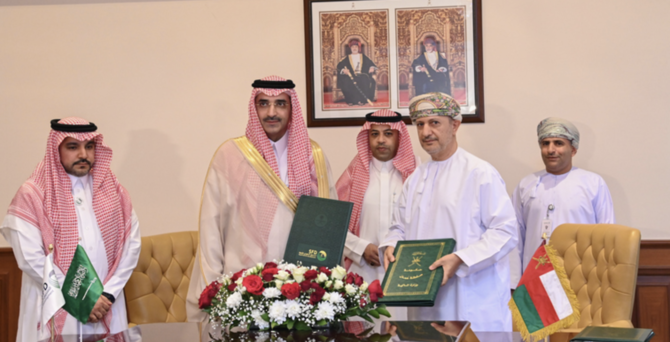
RIYADH: Oman’s industrial infrastructure is set to receive a boost following a new agreement with Saudi Arabia, fostering private sector participation in the country’s economic growth.
A memorandum of understanding, aimed at financing the infrastructure of several industrial zones in Oman, was signed during a meeting between Minister of Finance Sultan bin Salem Al-Habsi and Sultan Abdulrahman Al-Marshad, CEO of the Saudi Fund for Development, the Oman News Agency reported.
Discussions centered on cooperation mechanisms between Oman and the fund, along with updates on collaborative development projects.
The aim is to develop the industrial and logistical sectors by providing all necessary basic services, thereby encouraging the private sector to contribute to Oman’s economic development in line with Oman Vision 2040, as reported by the agency.
This memorandum falls within the framework of cooperation between the two parties to support developmental areas in Oman. These encompass infrastructure, higher and vocational education programs, and water, along with the industry and mining sectors. Additionally, it includes transportation and communications sectors, as well as developmental projects in the energy sector.
On another note, Ali bin Masoud Al-Sunaidi, chairman of the Public Authority for Special Economic Zones and Free Zones, met with Ken Saito, minister of economy, trade and industry of Japan, and his accompanying delegation in Tokyo.
During the meeting, they reviewed the business cooperation between the two countries and the major projects under construction in the economic and free zones and industrial cities in Oman, notably the low-carbon iron production project in the Special Economic Zone in Duqm.
The visit also included meetings with officials from companies engaged in iron and its derivatives production, and renewable energy equipment manufacturing companies, as well as a visit to Yokohama Port to learn about its experience in receiving ships specialized in energy and petroleum product transportation.
Also on April 24, Oman and the US explored ways to enhance trade, investment, and address challenges comprehensively during the second strategic dialogue held in Washington.
The Omani side was chaired by Sheikh Khalifa bin Ali bin Issa al-Harthy, undersecretary for Diplomatic Affairs, Ministry of Foreign Affairs, while the US side was chaired by Jose Fernandez, undersecretary of state for Economic Growth, Energy, and the Environment.
Both sides discussed opportunities for American companies in Oman, focusing on ICT, semiconductors, and clean energy services, expressing commitment to enhancing cooperation in clean energy solutions and mineral investments.
They addressed environmental priorities under the Omani-American cooperation memorandum, fostering communication between researchers from both countries for clean energy research.
Saudi NHC, Spain’s Urbas to construct almost 600 housing units in Al-Fursan suburb
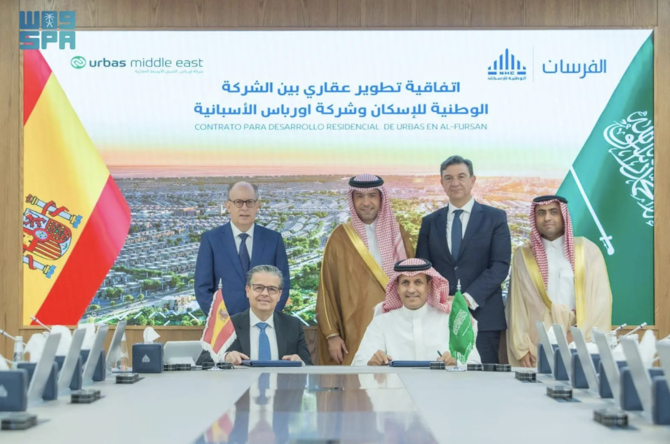
RIYADH: Saudi Arabia’s Al-Fursan suburb will soon be home to 589 new residential units worth around SR1 billion ($266 million) thanks to a deal sealed by the National Housing Co.
Inked with Urbas Middle East Real Estate Co., a subsidiary of the Spanish Urbas Group, the agreement involves the development as well as construction of the housing units on an area spanning 150,000 sq. m, the Saudi Press Agency reported.
This collaboration marks a significant milestone in the development of the Al-Fursan suburb. It also promises to set new standards in property development.
“This agreement complements the efforts of the recent visit to Spain and continues to attract international investments with major companies to provide various housing products that fulfill and meet the desires of citizens,” Saudi Minister of Municipal and Rural Affairs and Housing Majid Al-Hogail said in a post on X.
“As an extension of our journey in attracting the best international experiences and expertise in the real estate development industry, I was pleased to meet the CEO of the Spanish company Urbas, which is planned to be one of the companies developing the Al-Fursan neighborhood project in Riyadh,” Al-Hogail added.
The minister also highlighted how this step will contribute to providing innovative housing options and facilitate the exchange of experiences between Saudi and international developers.
IMF surcharges on borrowings exacerbate global inequities: report
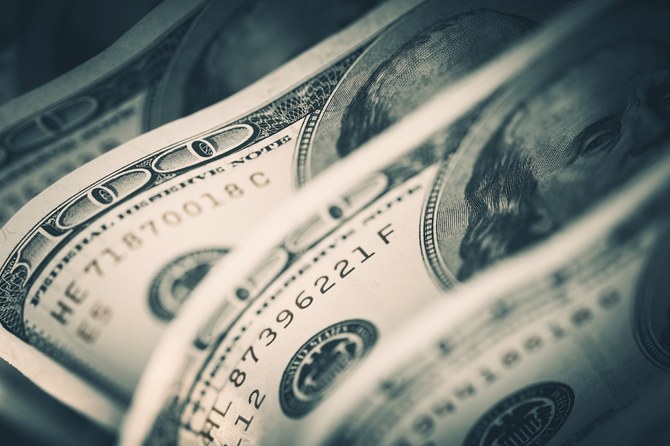
BENGALURU: Countries, mostly middle and lower-income, have been burdened by surcharges on top of interest payments on their borrowings from the International Monetary Fund, widening global inequities, according to a report by US think tanks.
WHY IT’S IMPORTANT
Indebted member countries paid about $6.4 billion in surcharges between 2020-2023, the report from Boston University’s Global Development Policy Center and Columbia University’s Initiative for Policy Dialogue released on Tuesday showed.
And the number of countries paying these surcharges has more than doubled in the last four years.
The IMF is expected to charge an estimated $9.8 billion in surcharges in the next five years, according to an earlier report by the Center for Economic and Policy Research.
Critics of the policy argue that surcharges do not hasten repayment and instead punish countries already struggling with liquidity constraints, increase the risk of debt distress and divert scarce resources that could be used to boost the struggling economies.
BY THE NUMBERS
Countries such as Ukraine, Egypt, Argentina, Barbados and Pakistan pay the most in surcharges, the report showed, accounting for 90 percent of the IMF’s surcharge revenues.
These surcharges, levied on top of the fund’s increasingly steeper basic rate, are IMF’s single largest source of revenue, accounting for 50 percent of total revenue in 2023.
KEY QUOTES
“IMF surcharges are inherently pro-cyclical as they increase debt service payments when a borrowing country is most need of emergency financing," Global Development Policy Center’s Director Kevin Gallagher said.
“Increasing surcharges and global shocks are compounding the economic pressure on vulnerable countries.”
CONTEXT
Data published by the Institute of International Finance earlier this year showed global debt levels hit a record of $313 trillion in 2023, while the debt-to-GDP ratio — a reading indicating a country’s ability to pay back debts — across emerging economies also scaled fresh peaks.
IMF shareholders agreed last week on the importance of addressing challenges faced by low-income countries, Managing Director Kristalina Georgieva said on Friday.
China’s wealth fund joins with Bahrain’s Investcorp for $1bn Middle East investment
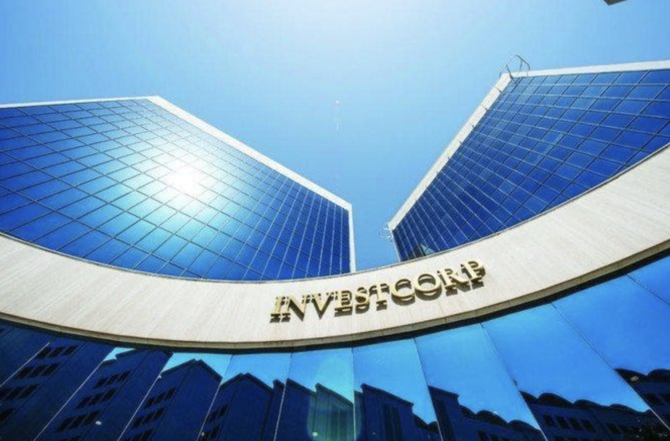
RIYADH: China’s growing interest in the Middle East continues as the country’s sovereign wealth fund partnered with Bahrain’s Investcorp to establish a $1 billion investment pot.
According to a press statement, Investcorp Golden Horizon fund will assist companies across Saudi Arabia, the wider Gulf Cooperation Council region and China.
The reserve will be anchored by reputable institutional and private investors from the GCC, as well as China Investment Corp.
The press statement revealed that target companies are expected to have high growth potential in sectors including consumer, health care, logistics and business services.
“During the past couple of years, we have built several bilateral funds with leading financial institutions to facilitate industrial cooperation between China and major economies in the world,” said Bin Qi, executive vice president and chief information officer at CIC.
He added: “Currently, we are working closely with Investcorp to build a similar bilateral fund to strengthen financial and industrial ties between China and GCC countries.”
This commitment from CIC comes when the GCC’s appeal to institutional investors is gathering pace, thanks to its stable regulatory environment and pro-business policies, driven by economic diversification efforts in the region and strategic privatization mandates.
“This commitment by CIC, one of the world’s largest sovereign wealth funds, is a testament to Investcorp’s unparalleled franchise in the GCC and reinforces the trust placed in the firm’s global platform and teams. We are looking forward to building on this relationship and growing our partnership in the future,” said Mohammed Al-Ardhi, executive chairman of Investcorp.
Co-CEO of Investcorp Hazem Ben-Gacem said the launch of the new fund will facilitate cross-border cooperation and investments between the GCC and China.
Trade and economic relationships between the Middle East and China have always been strong.
In 2023, China’s exports to Saudi Arabia and the UAE amounted to $42.86 billion and $55.68 billion respectively.
On the other hand, the Asian giant’s imports from Saudi Arabia totaled $64.36 billion in 2023.
In November, Saudi Arabia’s central bank, also known as SAMA, and the People’s Bank of China signed a local currency swap agreement worth $6.93 billion.
SAMA, in a statement, said that the three-year agreement “has been established in the context of financial cooperation between the Saudi Central Bank and the People’s Bank of China.”
The Asian country’s central bank said that the agreement will help strengthen financial cooperation between Saudi Arabia and China, promote the use of local currencies, and strengthen trade and investments between nations.
Oil Updates – crude steady as market weighs US demand concerns, Middle East conflict risks
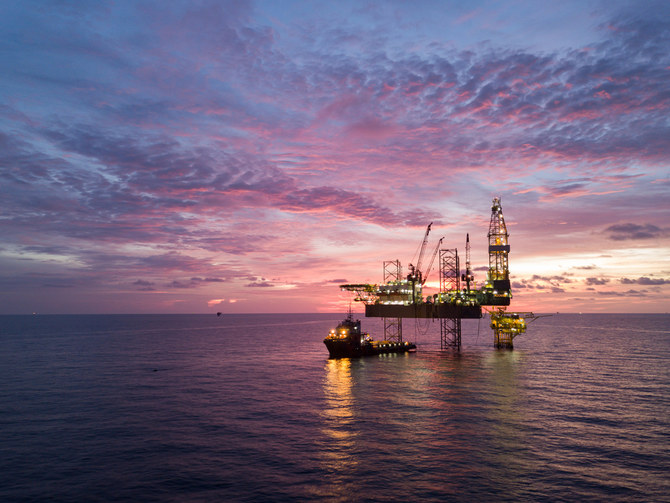
SINGAPORE: Oil prices steadied on Thursday after settling lower in the previous day, as signs of retreating fuel demand in the US, the world’s biggest oil user, contended with widening conflict risks in the key Middle East producing region, according to Reuters.
Brent crude futures inched up 18 cents, or 0.2 percent, to $88.20 a barrel at 9:30 a.m. Saudi time, while US West Texas Intermediate crude futures gained 13 cents, or 0.2 percent, to $82.94 a barrel.
Data from the US Energy Information Administration on Wednesday showed that gasoline stockpiles fell less than forecast while distillate stockpiles rose against expectations of a decline, reflecting signs of slowing demand.
The falling fuel demand is occurring amid signs of cooling US business activity in April and as stronger-than-expected inflation and employment data means the US Federal Reserve is more likely to delay expected interest rate cuts, weighing on economic sentiment.
“The current weakness in benchmark prices, after testing above $90 (a barrel) levels, is due to market sentiment refocusing on global economic headwinds over geopolitical tensions,” said Emril Jamil, senior oil analyst at LSEG Oil Research.
Geopolitics aside, prices this quarter will be driven by factors including major producer supply cuts, economic data out of China and Eurozone, on top of incremental demand expectations as the Northern Hemisphere heads into summer amid expected tighter supply, said Jamil.
A better indication of the Fed’s rate intentions will be seen after US gross domestic product and March personal consumption expenditure data is released on Thursday and Friday.
Meanwhile, fighting in the Gaza Strip between Israel and Hamas is expected to expand as Israel may start an assault on Rafah, in the enclave’s south, which may increase the risk of a wider war that could potentially disrupt oil supplies.
However, there have been no other signs of direct conflict between Israel and Hamas-backer Iran, a major oil producer, since last week.
“Tensions between Iran and Israel have eased, but Israeli attacks on Gaza are expected to worsen, and the risk of conflicts spreading to neighboring countries is underpinning oil prices,” said Toshitaka Tazawa, an analyst at Fujitomi Securities Co. Ltd.
Other EIA data on Wednesday showed that crude stocks slumped by 6.4 million barrels to 453.6 million barrels, compared with expectations in a Reuters poll for an 825,000-barrel rise.


